History - Evolution of Game Media
by Dark Watcher |
Over the years, game consoles have come in many shapes, sizes, and with capabilities that have improved with time. Without games they would be impressive technical boxes
that could be used for paper weights.
Consoles have used a wide assortment of formats for games. Each format provided strengths and weaknesses as far
as cost, storage capacity, durability, and of course portability.
This topic covers many of the formats used throughout the evolution of the video game console. Some formats such as the "Pong Packs" have not been
included. Begin your journey through the evolution of the media format by using the tabs for navigation.
|
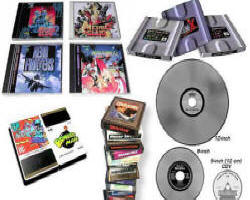 |
 Cartridge Formats Cartridge Formats |
Since the birth of video game consoles, no game format is more common then the cartridge.
Cartridges are games that are encoded on ROM (Read Only Memory) chips and housed in plastic cases. The ROM is wired onto a
PCB (Printed Circuit Board) that has a series of metal contacts along one edge. These contacts fit into a plug on the console's main board when
the cartridge is placed into the consoles slot. When power is supplied to the console, it automatically detects the presence of ROM,
and loads the game software into memory. In future generations, the use of specialized chips offered security for manufacturers. Some chips
offered compression techniques to store more information. Some chips gave feature enhancements to particular games that the original console
could not produce alone.
Cartridges had many advantages over other game formats. Games loaded immediately, and with no loading time. The design and plastic case made
them extremely damage-resistant. This durability worked well with younger children. The disadvantages of the format surfaced during later
generations. The format had limits to its storage capability. The cartridges could be made with more storage capacity, but it made them far
more expensive to produce (For ROM, chip use, and PCBs). Increase production cost translated to higher priced games for the
consumer.
The cartridge format became available in 1976. The first console to take advantage of the technology was the
Fairchild Channel F. Over
26 cartridges were made for the system.
Cartridges have graced consoles from the 1970's till late 1990's. The cartridge continues to be used (as of this writing) with handheld games. Over the years their storage capabilities have increased, but the format remained costly. However, games developers began moving toward
formats that provided more storage capacity at less cost. Optical disks became the new format of choice for console gaming. |
|
1st Generation |
Whereas the Channel F introduced the cartridge format to consoles, the
Atari 2600 / VCS popularized cartridge use. The main cartridge producers of this generation were the Atari 2600,
Mattel Intellivision and the
Magnavox Odyssey 2. They were generally rectangular in shape (general dimensions H=3.5 inches/ W=3 inches/ Thickness=1 inch). The
Odyssey 2 cart provided a nice handle for easier removal.
The typical ROM size for these cartridges was generally 2 to 16 kilobytes (KB), but there were
cartridges that surfaced in the late 1980s that were up to 32KB in size. |
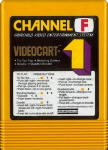 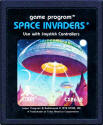 |
|
2nd Generation |
Cartridges did not change much with this next generation. The Atari 5200, Emerson Arcadia (and its many clones) and the
ColecoVision were the main cart producers at this time. None of the machines strayed from 32 Kilobytes (KB) in ROM size. ColecoVision cartridges kept the same rectangular shape and size (with a few notches and curves in the mold). Atari 5200
cartridges took on a different shape. These carts were made wider. This was Atari's attempt to fool buyers with a "Bigger is Better"
approach, but the cartridges were essentially the same. Many of Arcadia's games were the usual rectangular shape and size, but a few (as shown) were made longer for no apparent reason.
|
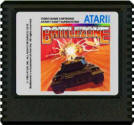 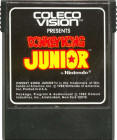 |
|
3rd Generation |
In this 8-Bit generation, the use of cartridges truly began to evolve. The
Atari 7800 carts went back to
the same rectangular style of their original carts (helped with backward compatibility). The storage capacity was much higher, and
accommodated up to 64KB of ROM.
Sega Master System took things a step farther by including RAM chips that were backed up with lithium batteries. This allowed you to save your progress in
a few games. Their carts held up to 524KB of ROM, and used a wider and smaller rectangular shape. Nintendo truly began to revolutionize cartridge use with its
Famicom /
NES.
They regained control of a once dying industry with the use of "lock-out" chips. They also began to
incorporate "Memory Management Chips" (MMCs) that gave new features to specific games. They also helped to expand the cartridges
storage capacity.
The NES cart can hold from 64KB to 512KB, but the use of MMCs expanded this. For example Kirby's Adventure is the largest NES
game release, and is 768KB in ROM size. The Famicom used a 62-pin cart (Shown HERE) with the same wide rectangle shape as
Master System. The US / UK released NES 72-pin cartridges strayed from anything else, and were larger, flatter, and almost square
in shape. Oh yeah. NES also used RAM chips to save game progress. Initially they were lithium powered, but in later years Flash RAM
was used. |
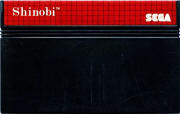
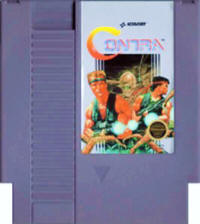 |
|
4th Generation |
The 16-bit generation brought about further innovations in cartridge use. Both the Sega Genesis and the
Nintendo SuperNES used chips to further enhance their console capabilities.
The typical max size of a Genesis cart was 4 Megabytes
(4096KB), but Sega managed to push a 5MB cart with Super Street Fighter 2. These carts used the same wide rectangle shape as the
Master System, but had rounded corners.
The SuperNES carts were also wide and rectangular in shape, which appeared to have become the standard rather then the longer carts of past generations. The SuperNES carts were much larger and thicker though. its Japanese counterpart 'Super Famicom' had slightly smaller carts with more rounded edges. Once again, Nintendo used various chips and compression methods on their carts. The cartridge ROM sizes could
range from 512KB to 16MB. However, the largest game cart made was a Super Famicom
game called "Tengay Maikio" which was 8.75MB.
The Atari 5200 may have tried to fool buyers with their "Bigger is Better" carts, but the Neo Geo AES cartridges of this generation took
the concept literally. These were the largest cartridges ever made for a console. Till this day, the Neo Geo has the largest cartridge
storage capacity ranging from as little as 2.75MB up to 111.5MB. These carts came at a heft price though! |
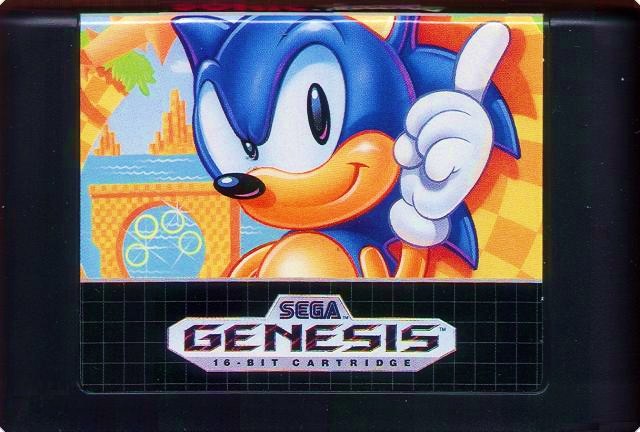 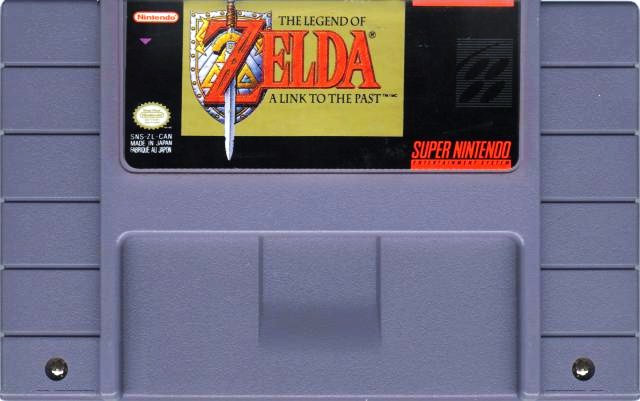
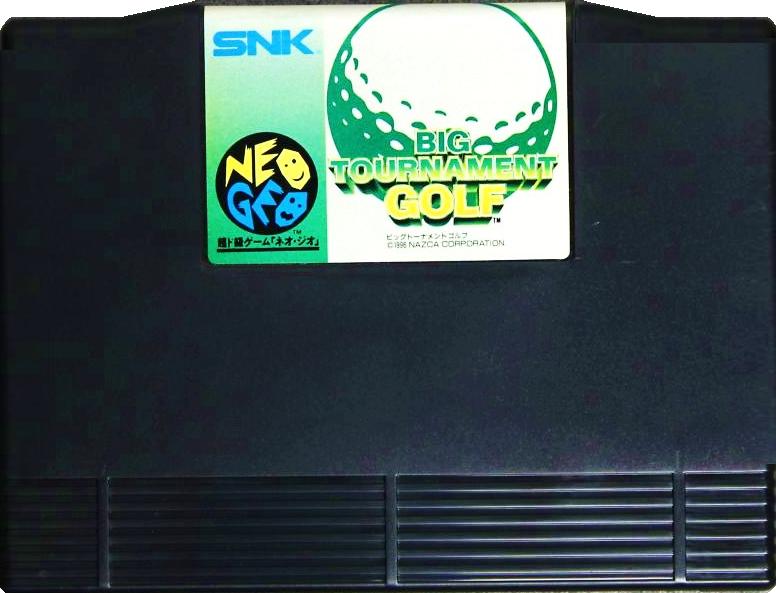 |
|
5th Generation |
The rise from 32-bit to 64-bit consoles kept cartridges in the same wide rectangular shape. Sega
introduced its short lived 32X console with carts roughly identical to the Sega Genesis. These carts were 2 to 4MB in size. Atari attempted to make a come back with its
Jaguar console. These carts could
reportedly hold up to 84MB of data using compression, but the games never got any larger then 6MB. Nintendo shocked the world when they
stood by the cartridge format with the Nintendo 64. These cartridges could hold from 16 to 64MB of game data, and yet were smaller then
their SuperNES cartridges.
|
 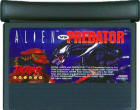 |
 Optical
Disc Formats Optical
Disc Formats |
As games and consoles evolved, developers sought formats with a higher storage capacity. Optical disk formats provided massive storage
capacity potential, and at lower manufacturing costs. Optical disks also allowed developers to incorporate quality sound and full motion
video. These were features not possible in previous cartridge formats (nearly any other format for that matter). The first use of the optical
disk on home consoles appeared between the 2nd and 3rd console gaming generations. The first format used was the Laser Disc (LD),
which appeared in the late 1970s, but wasn't used in a console till 1984.
Optical discs have become the ideal format for videogames. They provided plenty of capacity as well as added improved audio and visual
features. With next generation consoles on the rise, it will be expected that new forms of discs will be created. |
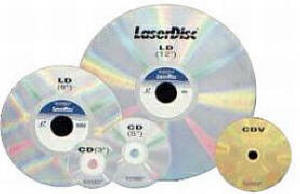 |
|
Laser Disc |
The Laser Disc was first used in the RDI Halcyon (1984) in order to play LD games introduced into arcades. The format was later reintroduced with the
Pioneer
LaserActive in 1993.
The Laser Discs were flat platters that resembled music CDs, but were either 30 centimeters (cm) or 20cm in diameter.
As far as storage capacity, the games consisted of a 540 megabyte data area,
plus a separate 60-minute analog image and audio storage area. The games consisted of uncompressed analog video with analog / digital sound. Games could also use both sides of the disk.
As impressive as the Laser Disc format sounds, it was too expensive to produce at the time. The discs were also large, heavy and easily damaged. |
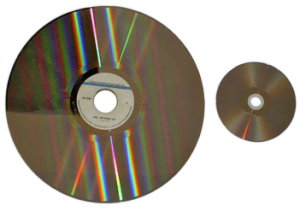 |
|
Compact Disc |
In the 1980s, Philips decided to create another platter like format that was smaller (12cm) then the Laser Disc. The format was initially used
for audio and music ("Red Book" standard). It would only be a matter of time that the format would be used for data storage. Now before we
move onto data CDs, we will try to explain the makeup of a typical CD. This will help in the explanations later.
Without getting too technical, the information on CDs are written on spiral tracks. These tracks are broken down into sectors of information. A typical 12cm CD has over 333,000 sectors each with 2352 bytes of info. The info is written into the disc as pits and lands to represent data
bits (1's & 0's) and read by a scanning red laser (built in a drive of course). In the 1990s, developers managed to squeeze a few more tracks
onto a CD while keeping close to Phiips original standard. This allowed for an 80 minute audio CD.
In 1984, Philips and Sony created a data discs known as Compact Disc Read Only Memory (CD-ROM). It was defined as the "Yellow Book" standard. They created the universal file retrieval / directory format called International Standards Organization spec # 9660 (ISO 9660 or High Sierra
Format). This format would allow CDs to be read by most drives regardless of make, system, or manufacturer. This format required all CDs to
have a few data bytes designated for TOC (Table of Contents like a book), header, sync and error detection / correction (ECC). It also
defines the disc layout in order to be read by CD readable drives. The common specification for most data CDs are listed as "CD-ROM Mode 1"
under the "Yellow Book" standard. Data CDs in this mode require up to 304 bytes per sector for TOC, Error correction, etc. This leaves 2048
bytes per sector for actual data usage. So a nice formula for you math people is: 2048 bytes multiplied by 333,000 sectors equals the storage
capacity of the data CD. The 80 minute audio CD was later
used to store data as well. Newer CD drives could use these CDs to read up to 359,999 sectors of data.
We can now go into consoles that used CDs for game media (hope you are still with us :)). The first console to ever use CD media for games was NEC's
PC Engine CD-ROM2, an add-on released in 1988 for the PC Engine console. Other manufacturers soon followed up with their own CD based
systems in the early 1990s. These systems used the CD-ROM Mode 1 spec and could store up to 650MB of game data. They also conformed to the ISO 9660 file system / directory format. This allowed the consoles to also run music
CDs and a few other CD formats. Many other CD based console used this spec including the Neo Geo CD, followed by the
Sega Saturn in 1994.
In 1986, Philips and Sony created yet another standard called "Green Book". Rather then storing data and audio files on
different tracks as defined by Mode 1, they created a method of combining data and compressed audio (ADPCM
sound) on a single track. This method required less error correction, which left more bytes for data (2324 bytes per sector). They also added
an operating system called Compact Disc Real Time Operating System (CD-RTOS) that would instruct the machines on how to use the disc. These discs were called Compact Disc Interactive
(CD-i). These discs could only be run on "CD-i" compatible equipment. The first gaming console to take advantage of the "Green Book"
standard was the Philips CD-i, which was released in 1991.
In 1988, Philips and Sony made a modification of
CD-ROM that defines two new types of sectors that enable it to read and display data, graphics, video and audio at the same time. The
specification was called CD-ROM XA (for eXtended Architecture) and basically borrowed elements from the "Green Book"
standard. The tracks were defined as Mode 2 and allowed 2324 bytes per sector free for data purposes (Up to 738MB). CD-ROM XA
was published as an extension of the "Yellow Book" standard. Sony used the format with their black bottomed PlayStation games in 1994. The PlayStation also incorporated an audio / video
compression technique called MPEG 1.
In 1995, Atari decided to throw CD standards out of the window with their Jaguar CD add-on. The Jaguar game CD
could hold up to 790+ MB and did not follow normal ISO 9660. How were they able to do this? With the help of Philips (papa to
all things CD), a special CD Drive was created that had built-in error detection / correction. The discs would be read as if
they were mere audio CDs. |
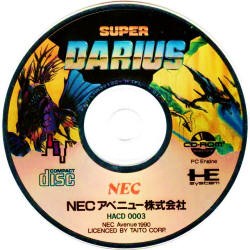
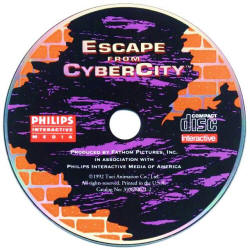
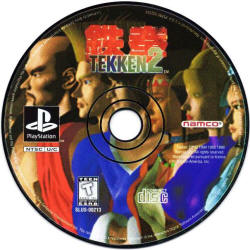
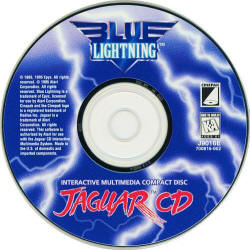 |
|
GD-ROM |
In 1998, Sega released the Dreamcast in Japan. The console used its own proprietary disc format designed by Yamaha. These
"Gigabyte Discs" were capable of storing 1228.8 megabytes (1.2GB) of data. Although they resemble normal CDs, the GD-ROM
contains 4 tracks. The first 2 tracks of the inner ring conformed to the normal "Yellow Book" CD-ROM track and a "Red Book"
audio track. These tracks could hold up to 35MB of data. It is from here where the disc strayed from the norm. A third track contained no data
and was used as a separator. The 4th track on the outer ring stored the actual game data. This outer ring is a high density area that packs
the pits and lands closer then on a regular CD. This allows the disc to hold more information, but needs a special drive to read them.
The drive is basically built out of normal CD drive components, but has the ability to read at two different speeds (for both the lower
density inner ring and higher density outer ring). This provided the Dreamcast with an extra added means of copyright protection. However the higher density areas were sensitive to scratches, dust and
fingerprints. |
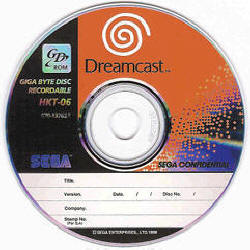 |
|
DVD |
DVD fever struck the world in 1996 and became the true successor to Laser Disc. It only made sense that the DVD's
immense gigabyte storage capacity would be used for other applications other then playing movies.
Since we probably bored you to death with CD-ROM descriptions, here is the quick rundown. If you skipped the CD-ROM section, you
may want to peak at it to understand some of the terms. DVDs are essentially the same 12cm diameter as CD. DVD stores
more data by tightening the tracks on the disc (0.74 microns between the tracks, compared to 1.6 microns on CD). Obviously, a different
kind of drive laser is required to read these closer tracks. DVD-ROM uses improved ECC that leaves more space for user data. DVD-ROM initially used an improved file structure of ISO 9660. It was initially based on ISO 13346, but has increased
compatibility and other features. It is now called the Universal Disc Format (UDF) and offers backward compatibility with ISO 9660. This allows DVD drives to be backward compatible with CD. DVD also uses an improved audio / video
compression method (MPEG 2). DVDs come in different formats and are more commonly one sided single-layer (called DVD-5
at 4.7GB capacity). However, they have also created two-sided disks (DVD-10 at 8.75) similar to what was used with Laser Disc. DVD can also come in dual-layered format (DVD-9 at 8.54GB; DVD-18
at 16GB). A dual-layer DVD-ROM disc is basically two pre-mastered discs bonded together. These dual-layer discs contain a lower
pre-mastered translucent "see-thru" layer and an upper pre-mastered normal layer. By changing the laser's focus, the layer closest to the
laser becomes transparent, and the laser is able to read the pits on the second layer or simply read the first layer as normal.
The first console to utilize DVD technology for games was the Sony PlayStation 2 in the year 2000. It was backwards compatible with CD-ROM, Music CD and CD-ROM XA. It could also
play DVD movies. Sony took advantage of DVD-5 capacity and produced blue / silver bottomed game discs (similar to their black-bottomed CDs). In 2003, developers began making
DVD-9 capacity games for PlayStation 2. These discs can be identified by their gold colored bottom.
In 2001, a short lived NUON based system produced DVD films with built in games. It didn't have the same impact. In that same year, the
Microsoft Xbox also appeared. The Xbox advertised its DVD-9 capabilities from the start, but the games come in both
DVD-9 and DVD-5 formats. Unlike normal DVD-ROM however, Xbox games stray from the normal UDF files system and uses its own proprietary XDVDFS file system. This serves
as a copyright protection.
A few days after the release of Xbox, Nintendo put aside its cartridge ways and adopted a "Mini DVD" format developed and
manufactured by Matsushita. GameCube discs are essentially 8cm DVDs that can hold up to 1.5GB of data. These discs also
do not conform to UDF and use a file system designed only for use with the GameCube console. Although the capacity is much
smaller then regular DVD, developers can utilize many compression techniques to fit more data. In 2002, a developer called Factor 5
teamed up with DivX and ported MPEG 4 to GameCube. MPEG 4 can compress audio / video 7 to 10 times smaller then MPEG 2. This provided a viable solution to the smaller disc size. |
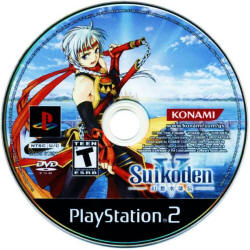
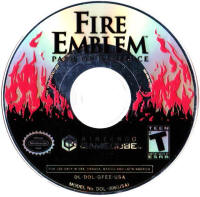
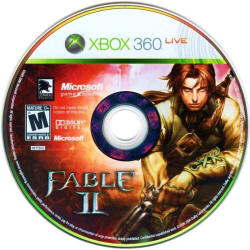 |
|
Blu-ray |
Like most advances in technology, it was only a matter of time before Optical Discs evolved.
Blu-ray
discs made their initial appearance in 2002. Like many of the other formats, the discs are 12cm in size, and come in both single and dual
layer. However, Blu-ray discs can store up to 25 GB (50 GB Dual) of data. This is accomplished by packing the tracks so tight that it
requires a blue 405nm laser to read them (thus the name Blu-ray). Although it uses a different laser, Blu-ray disc drives are
backwards compatible with DVD and CD discs.
Sony has always seemed to be looking for new ways to push optical formats. They used the CD-ROM XA
format with the PlayStation console and they used DVD with its successor the PlayStation 2. It only made sense that as
one of the main developers behind Blu-ray technology, they would also use the discs in its Sony PlayStation 3 game console.
|
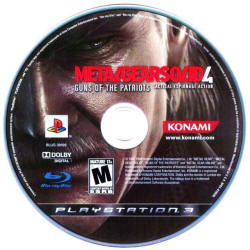 |
 Other Game Media Formats
Other Game Media Formats
|
|
Over the years, game developers have introduced various other methods of game storage. In most cases their goal was to find a low cost method
for producing games. Some were meant to remedy storage capacity, while others defy any logic whatsoever. Here are some of
the more unique game formats produced over the years.
|
|
Tape Format |
Cassettes and VHS were very common in the 1980s and 1990s. They were the ideal format for music
and film, but strangely enough were also used for gaming. Cassette tapes were initially adopted as a low cost game format for computers. They
had very long load times, but were far cheaper then cartridges. These "Datasettes" could theoretically hold up to 97 kilobytes (KB) on
a 60 minute cassette.
In 1982, an add-on was created for the Atari 2600 that would allow cassette games to be played. The Starpath Supercharger
plugged into the Atari 2600 cartridge slot and had an attached cord that could connect to any audio cassette player.
In the 1980s, a new means of interactive gaming made use of the VHS
video tape format. In most cases these tapes were simple movies that made you feel as if you were taking part in the action. In theory, you
could not really call these tapes a video game format because they do not contain game program or code. However, in 1987, a company named
Worlds of Wonder released a console called the Action Max. The console used VHS videotapes that not
only have simple movies, but also intermittent program code that the console used to generate graphic and sound effects. |
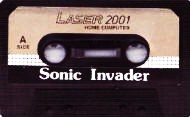
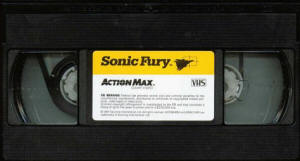 |
|
Disk Format |
Sure, sure, disks have been used for computer games for many years. Nintendo actually introduced the
format to consoles. In 1985, Nintendo lured kids in with cheaper 128 KB Famicom Disk System games. The format had capacity and
copyright problems, and would be discontinued.
Oddly enough Nintendo would return to the format in 1999. This time the Nintendo 64 high-density 3-3/4 inch magnetic disks (for
the Nintendo 64DD) could hold an amazing 64 megabytes. Nintendo would again discontinue the format. Both disk types appeared in Japan only.
|
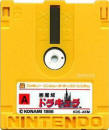 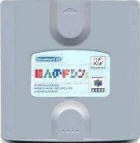 |
|
Card Format |
This is probably one of our most favorite formats. Imagine a game format that's the size of a credit card. These
cards are basically the same ROM and PCB (Printed Circuit Board) found in cartridges, but without the bulky cartridge case.
The first appearance for this format on a console was Sega's SG-1000 \ Mark I in 1983. The Sega "Game Card" was cheap to manufacture, and cheaper for buyers. The format could hold 32
Kilobytes of ROM. Eventually cartridges would surpass the card capacity.
In 1987, NEC would bring back the card format. The PC Engine / Turbografx-16 played games in what was called the "HuCard" format. HuCards held an impressive 4 Megabyte (MB) capacity. This exceeded the capacity of any cart format of its time. A year later NEC would release the
SuperGrafx in Japan. There were 5 HuCard games made for the system, and a few were an even larger 8 MB capacity. It seems the format was discontinued after NEC's "Turbo"
line of consoles. |
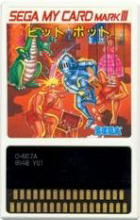 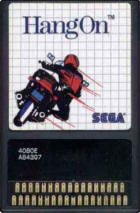 |
|
Digital Format |
OK, so it is not exactly a physical format, but it is a means to distribute games. If anything it is possibly
the least costly. The downloading popped up here and there on consoles. The actual downloading methods also varied.
In 1981, local cable TV operators began to broadcast "PlayCable". The "PlayCable system" worked by dedicating a channel that
'transmitted' "Intellivision" game data. A special add-on peripheral, the PlayCable unit, could decode game catalogs, and
'download' the games to the "PlayCable Master Component". The unit was designed to connect against the Mattel Intellivision and
could be rented by the cable provider.
In 1983, Atari 2600 owners were introduced to GameLine. The GameLine service allowed gamers to download Atari games over a
normal telephone line. For $49.95 you would get the GameLine Master Module consists of a 1200 baud modem, an 8K memory device to
temporarily store games, an automatic telephone dialer and a one year service subscription. The Master Module was inserted into the
2600 cartridge port. The service also allowed gamers to compete in GameLine tournaments. There were also a few exclusive game titles.
In 1995, the Nintendo Satellaview allowed Japanese gamers to download Super Famicom games from a
satellite called St. GIGA. It allowed subscribers to download games, demos, news, interviews, and whatever else Nintendo felt like
offering. There were no costs beyond the price of the device itself and subscription; all downloads were free. The system focused
more on BS exclusive games rather than just demos of existing titles. The games could be saved for use later and could only be downloaded
between 4 PM and 7 PM. The small time window was because St. GIGA was also used to broadcast normal TV programming.
In 1993, a company called LodgeNet Entertainment Corporation signed an agreement with Nintendo of America that allowed them to broadcast SuperNES games onto hotel room televisions. By using
proprietary b-LAN(SM) interactive system technology and LodgeNet's patented video game protocol, hotel guests could simply select a game from a television broadcast menu (for a fee of course). The game information would be downloaded to the television and the game could be played using a proprietary controller. The setup would be
called Nintendo in-room video game system.
In 1998, both companies made a similar agreement to deliver Nintendo 64 games.
In 2003, agreements were again made allowing LodgeNet to deliver Nintendo GameCube games through their new SigNETure TVSM marketing & entertainment system.
In 2003, a console called Phantom was announced that would allow "On-Demand" game download capabilities over a broadband internet
connection. The Phantom became vaporware, but its concept of game downloads was adopted by 7th generation consoles Nintendo Wii
(Virtual Console), Xbox 360 (Xbox Live Arcade) and PlayStation 3 (PSN Store).
|
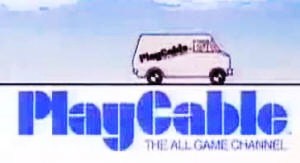
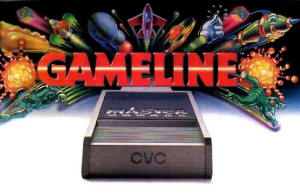
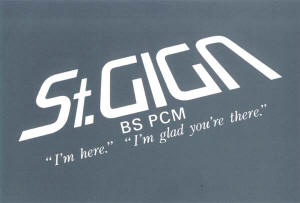
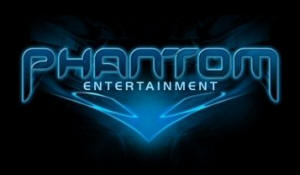 |
|
|
 Cartridge Formats
Cartridge Formats
















 2010s - NOTES
2010s - NOTES

 Optical
Disc Formats
Optical
Disc Formats










 Other Game Media Formats
Other Game Media Formats










 DISCUSS
DISCUSS